[Bluebells and Lungworts: The Genus Mertensia East of the Cascade
Mts. of Oregon and Washington]
Leafy Bluebells, Prairie Mertensia, Bugle Lungwort, Oblong Bluebells, Sagebrush Bluebells
Mertensia oblongifolia
Synonyms: Mertensia oblongifolia var. amoena, Mertensia oblongifolia var. nevadensis, Mertensia oblongifolia var. oblongifolia, Mertensia x umbratilis
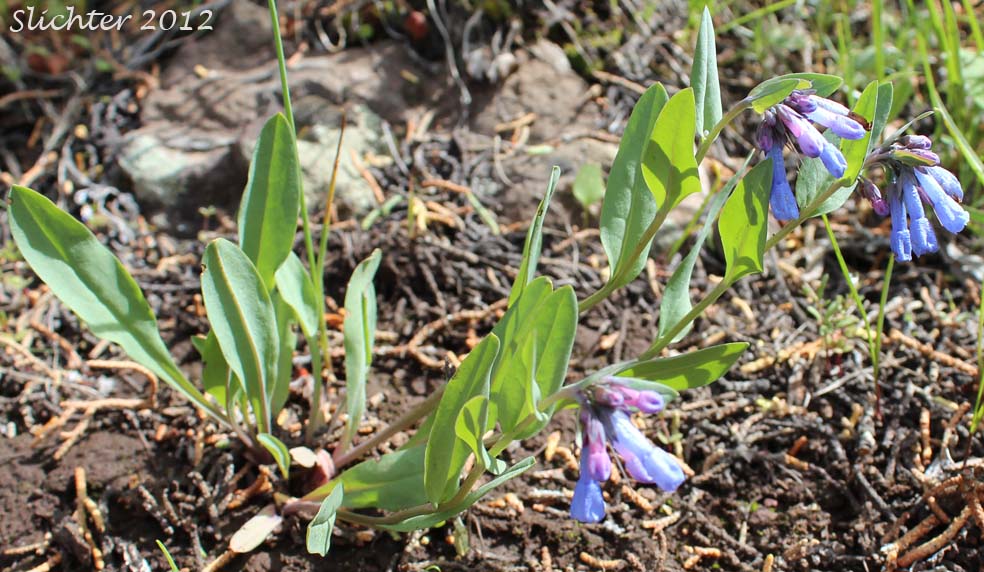
The photo above represents Mertensia oblongifolia from
the north loop road to the Steens Mt., near M.P. 9.........May 27, 2000.
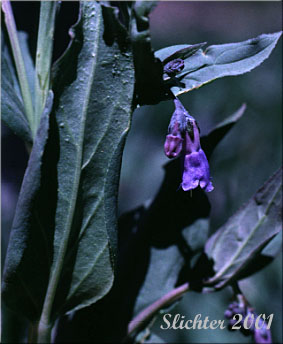 The
photo at right represents Mertensia oblongifolia from Jackman Park C.G.,
Steens Mt.....June 24, 2000.
The
photo at right represents Mertensia oblongifolia from Jackman Park C.G.,
Steens Mt.....June 24, 2000.
Characteristics:
Also known as sagebrush bluebells, leafy bluebells is an attractive,
perennial wildflower with several to many erect stems from 10-40 cm high from
a stout branching base that is covered with old leaf bases. The stems are glabrous
while the leaves are covered with straight, stiff and appressed hairs above
but are glabrous below. The well-developed basal leaves are elliptic, oblanceolate,
or lance-ovate in shape with blades 2-15 cm long and 0.7-6 cm wide on a well-developed
petiole. The numerous stem leaves are well developed and longer than the internodes
(space between leaves), ranging from 2.5-7 times as long as wide. They are acute
to obtuse at the tip and only the lower leaves are petiolate.
The inflorescence consists of several clusters of drooping flowers
at the ends of the stems that form a dense to loose panicle. The pedicels are
glabrous to covered with stiff, straight and appressed hairs. The tubular corolla
is 1-2 cm in length with the tube 1.3-2 times longer than the slightly expanded
limb (distal portion of the corolla) which is bell-shaped (See photo at right.).
The calyx is 2.5-7 mm long and cleft to near the base. The individual
calyx lobes are triangular-lanceolate with acute tips. The style is about equal
in length as the corolla or may be slightly exserted.
Habitat:
Leafy bluebells may be found on open slopes, in dry meadows,
and often among sagebrush from the plains and foothills to moderate elevations
in the mountains.
Range:
Leafy bluebells may be found entirely east of the Cascades in
Washington and Oregon south to central Nevada and northern Utah (Wasatch and
Bear River ranges), and east to the edge of the Great Plains (eastern edge of
the Rocky Mts.) in northern Wyoming.
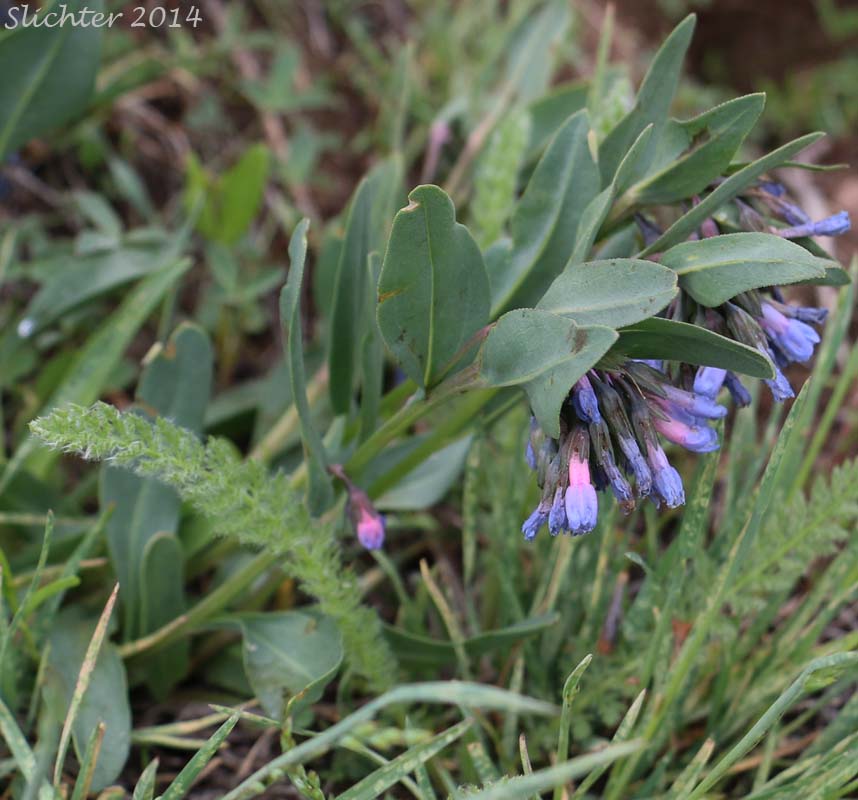 -
- 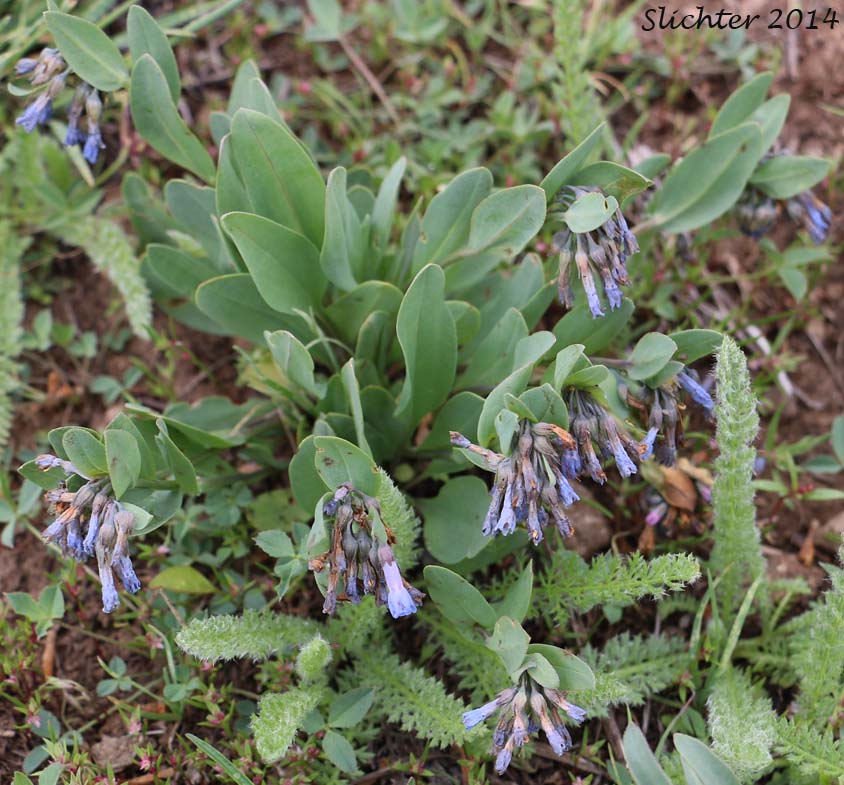
Leafy bluebells as seen in grasslands near the head of Kiger Gorge, Steens Mountain..........July 11, 2014.
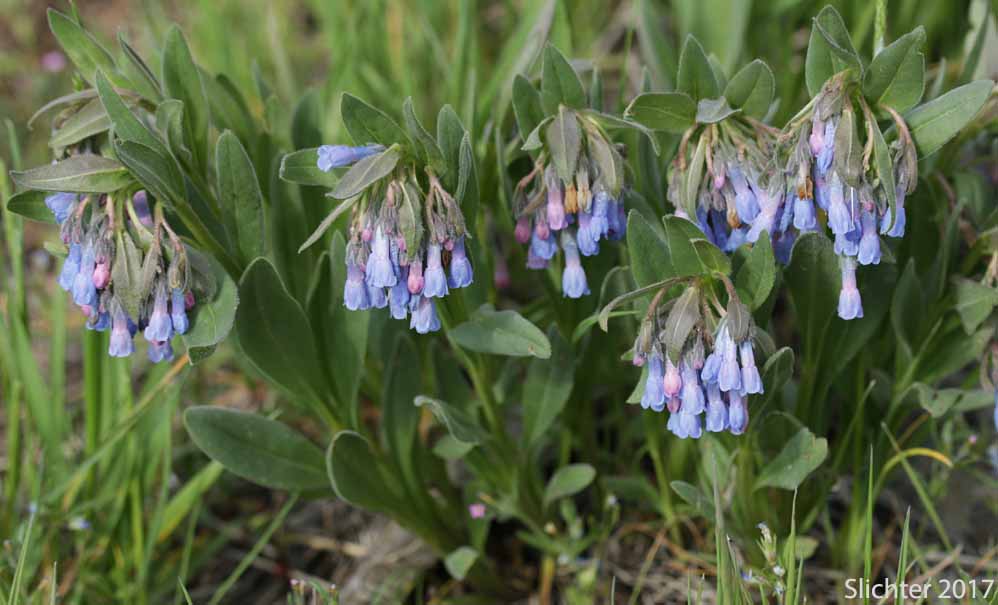 -
- 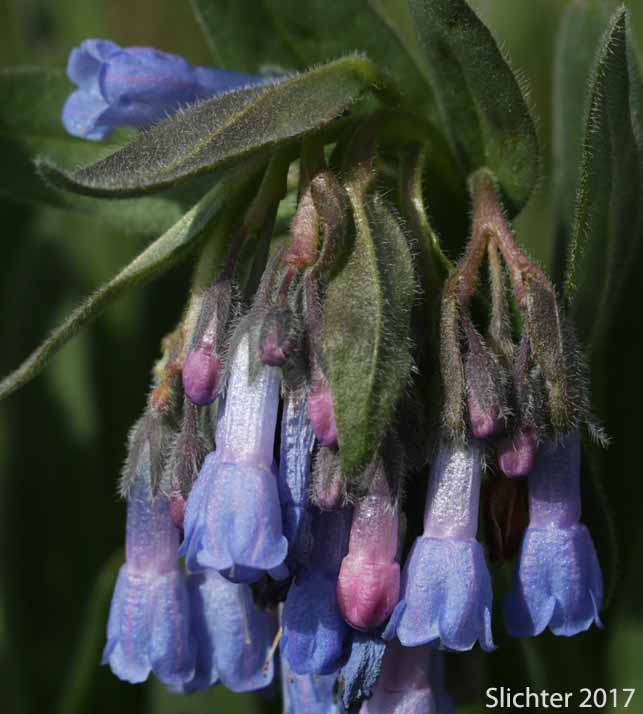
Leafy bluebells as seen at a bridge abutment above the North Fork Crooked River on Forest Road 42 just west of the junction with Forest Road 30, Ochoco National Forest..........May 10, 2017. Note the numerous spreading hairs on the leaves which suggest Mertensia cusickii, but the close-up of the inflorescence shows the tube is substantially longer than the limb.
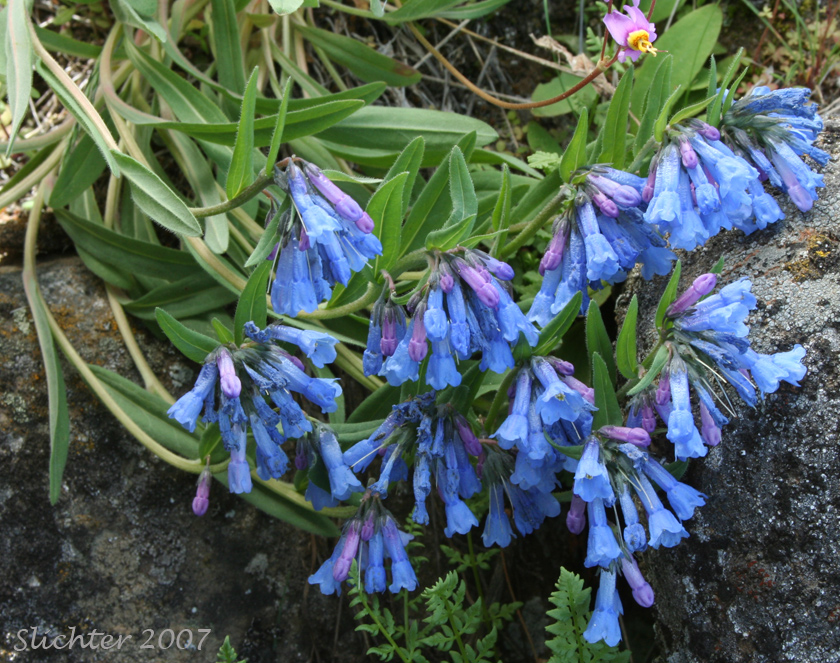 -
- 
The photo above shows an especially floriferous example of leafy bluebells as seen at Wilson Creek, a BLM site about 10 miles southwest of the town of Wilbur, WA (Lincoln County).........April 30, 2007.
Note the numerous hairs on both leaf surfaces as well as spreading from the margins of the calyx lobes.
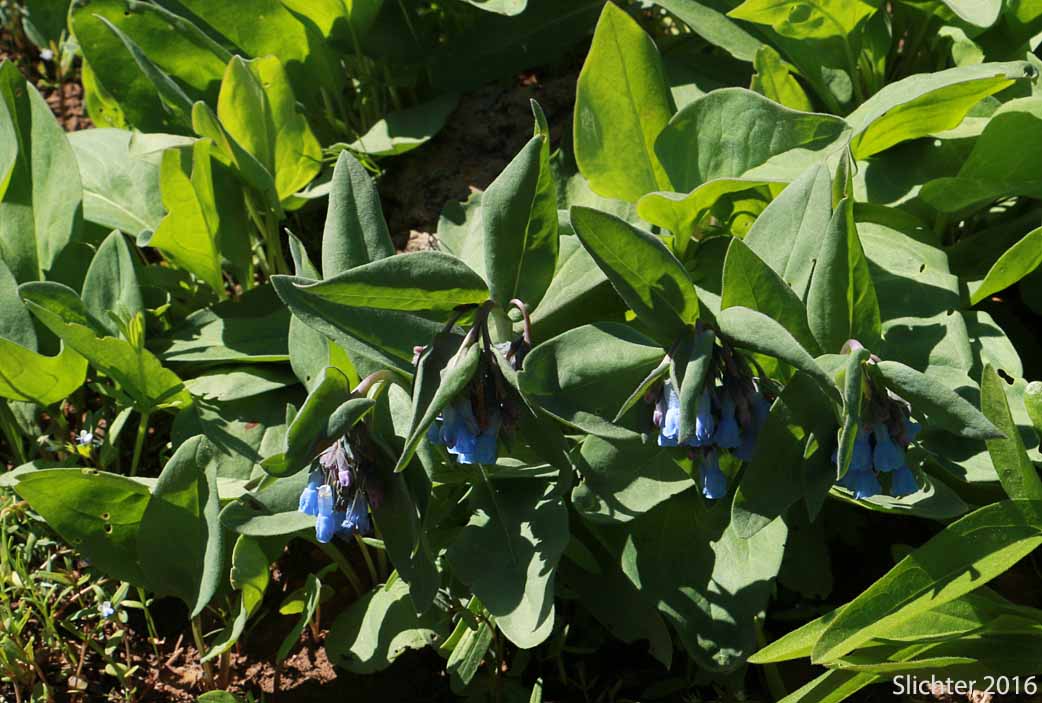
Leafy bluebells as seen near the south side of the summit of Round Mt., Ochoco National Forest........May 28, 2016.
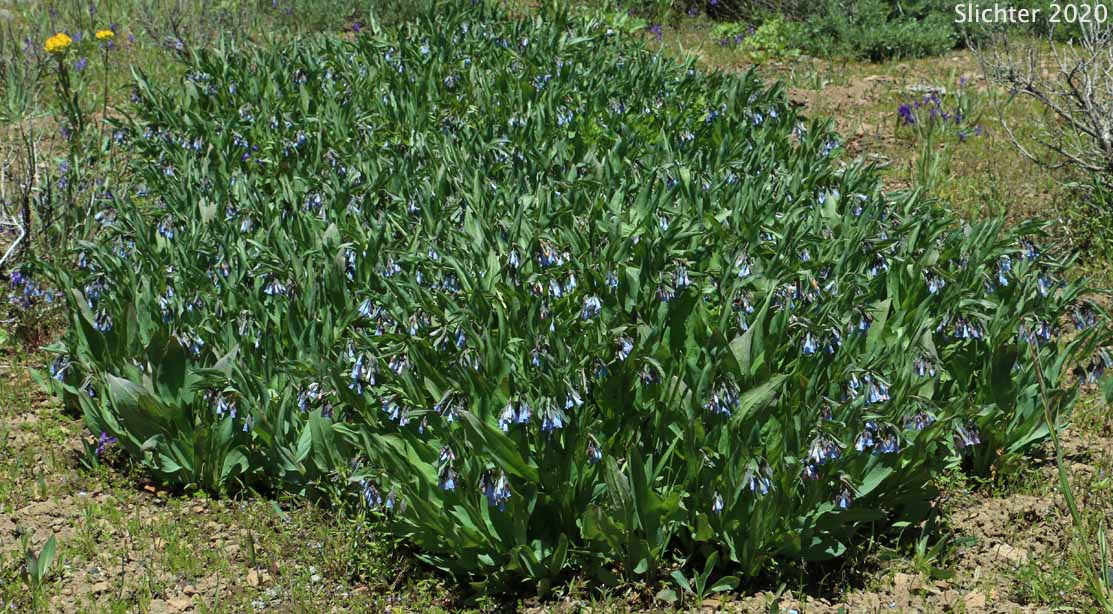 -
- 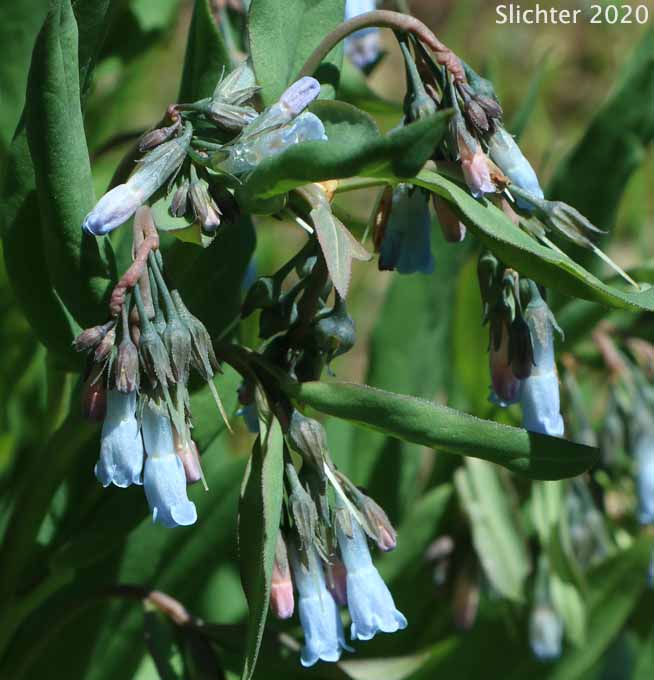
 -
- 
Leafy bluebells observed along the Hanan Trail #142, Fremont-Winema National Forest.......June 17, 2020. The numerous clustered stems suggest these are Mertensia foliosa (M. oblongifolia var. nevadensis) which is lumped into M. oblongifolia in Oregon.
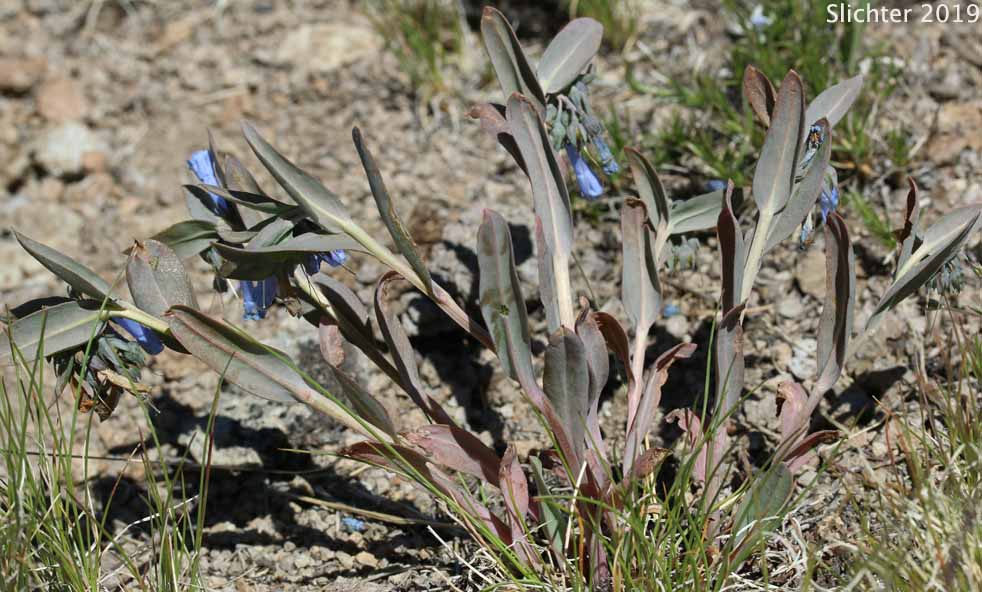 -
- 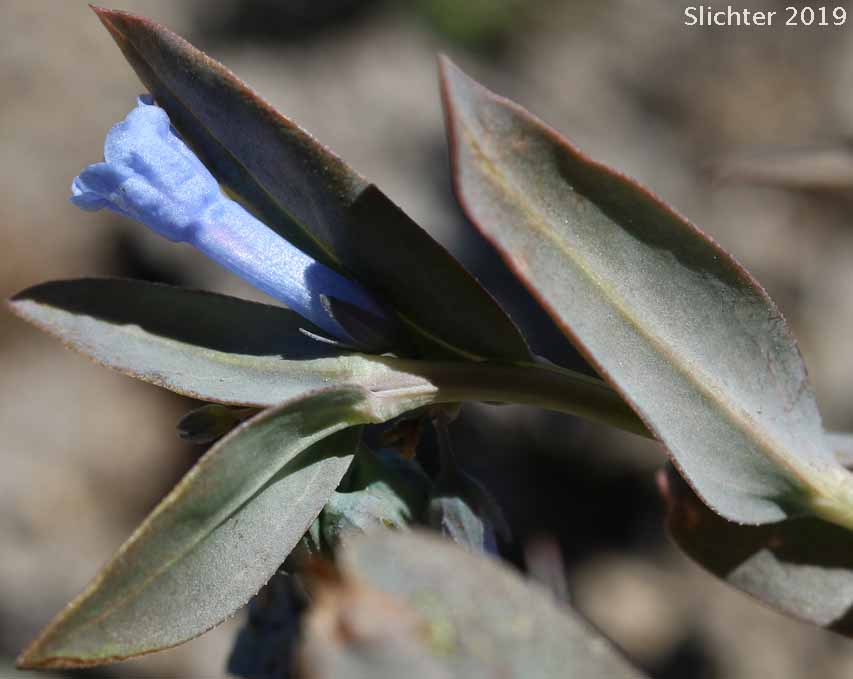
Leafy bluebells observed on the ridgeline between Light and Drakes Peaks, Fremont-Winema National Forest......June 29, 2019. With several leafy stems arising from the ground, this would key out to variety nevadensis (or foliosa).
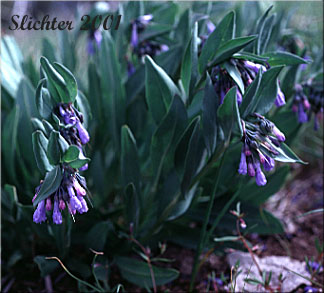
The photo above represents Mertensia oblongifolia from
the north loop road to the Steens Mt., near M.P. 9.........May 27, 2000.
Paul Slichter
 The
photo at right represents Mertensia oblongifolia from Jackman Park C.G.,
Steens Mt.....June 24, 2000.
The
photo at right represents Mertensia oblongifolia from Jackman Park C.G.,
Steens Mt.....June 24, 2000.
